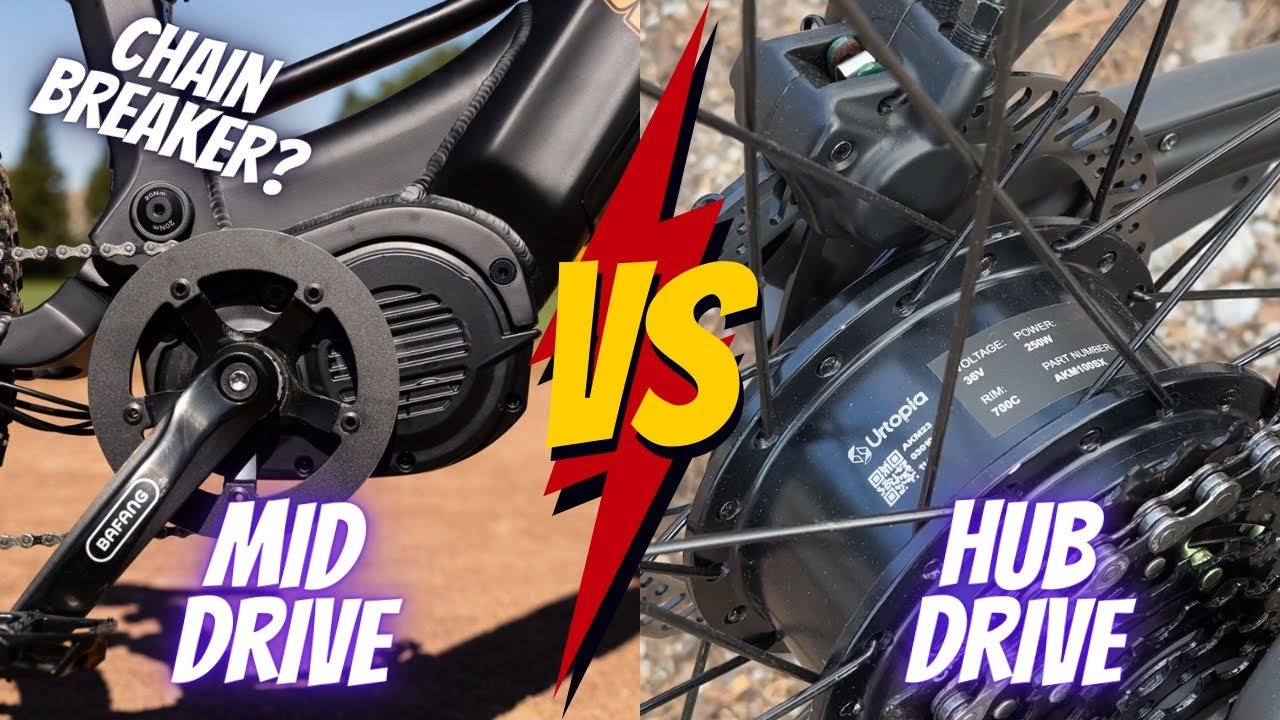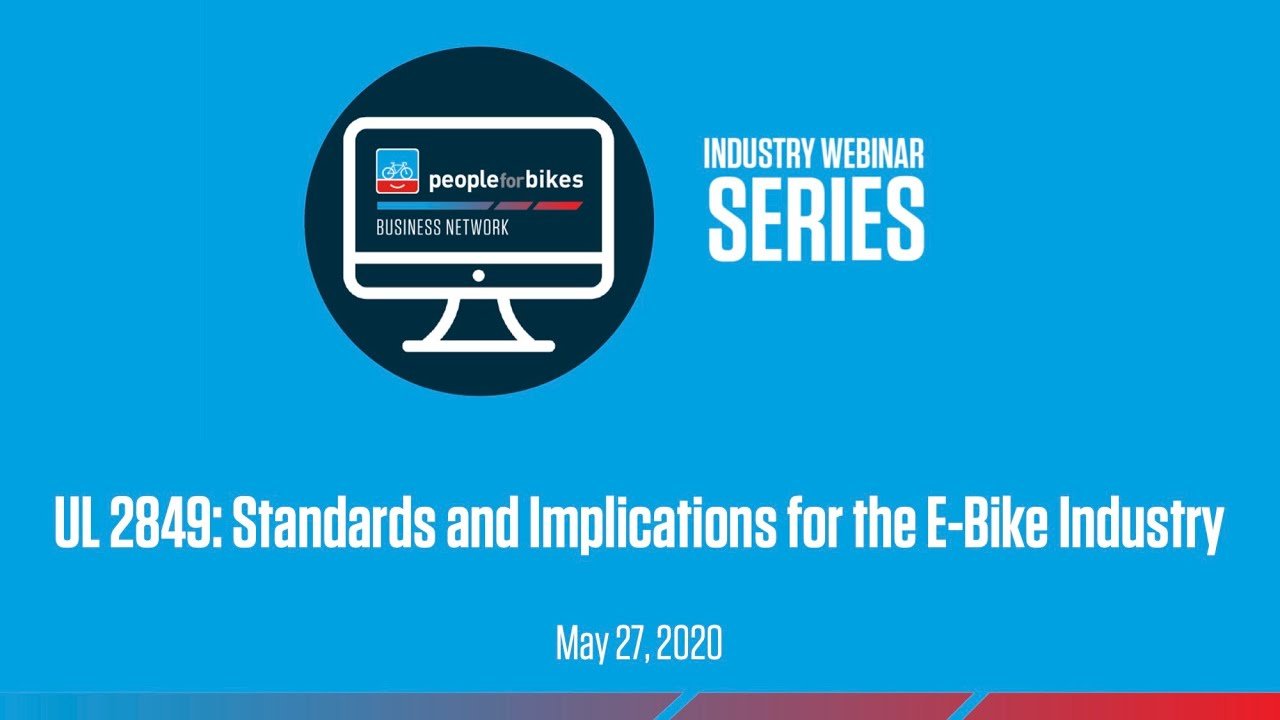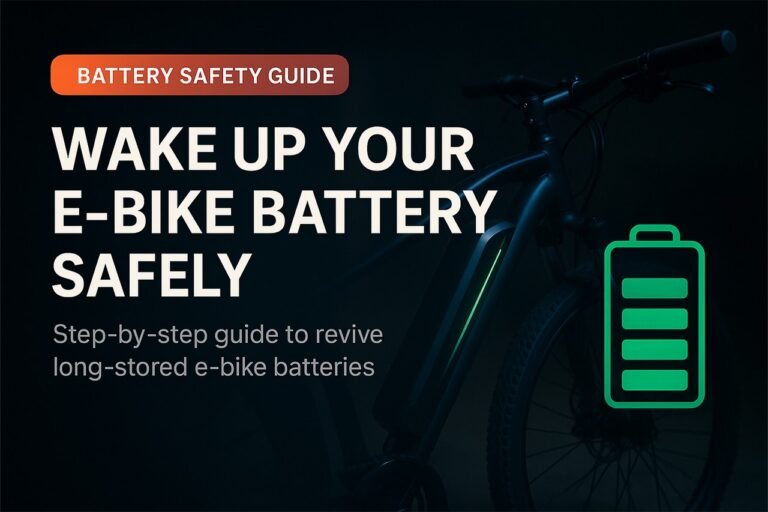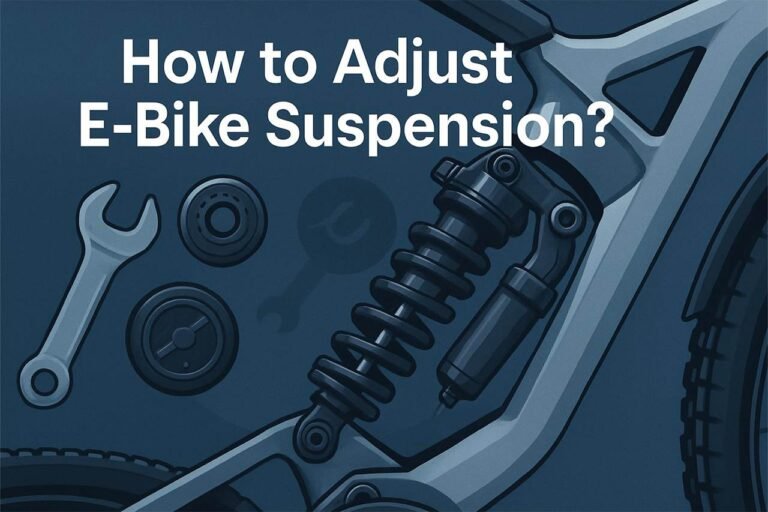![The 10-Step Checklist Before Buying Your First E-Bike: A Beginner’s Guide ([year]) Checklist Before Buying Your First E-Bike](https://goebikelife.com/wp-content/uploads/2025/06/Checklist-Before-Buying-Your-First-E-Bike.jpg)
Buying an e-bike is an exciting step, but it can feel a bit overwhelming for beginners. There’s a lot to think about before making a choice, and understanding what matters most will help keep the process straightforward.
A good checklist before buying your first e-bike will help you compare the options, understand the important features, and avoid mistakes that can cost time and money. By knowing what to look for, buyers can feel confident and make a choice that fits their lifestyle and needs.
This article will guide readers through the key factors to consider and outline a simple step-by-step checklist before making a purchase. Expect tips that cover what really matters, from battery choices to the right type of motor, so anyone can make an informed decision.
1) Define your riding needs and typical terrain
![The 10-Step Checklist Before Buying Your First E-Bike: A Beginner’s Guide ([year]) A group of people outdoors with an electric bike and a checklist, standing near a park trail with varied terrain in the background.](https://goebikelife.com/wp-content/uploads/2025/06/v2-w955p-c45uk.jpg)
Before choosing an e-bike, it helps to think about where it will be used the most. Some people need a bike just for city streets, while others want something that can handle dirt trails or steep hills. The right e-bike will depend on these routines.
Different terrains affect what type of e-bike will be comfortable and safe. For example, bumpy off-road paths require a sturdy mountain e-bike, while smooth roads are fine for lightweight city models. Consider if the commute involves hills, flat roads, or a mix.
Here’s a quick list of factors to consider:
- City commuting: smooth, paved roads
- Off-road: trails, dirt, mud
- Mixed use: paths, parks, and some traffic
- Steep hills: extra motor power needed
Thinking through these details helps match the type of e-bike to each rider’s real-world needs. For more tips on picking a bike that fits the type of terrain, check out this beginner’s e-bike guide.
2) Set a realistic budget for your e-bike purchase
![The 10-Step Checklist Before Buying Your First E-Bike: A Beginner’s Guide ([year]) Hands holding a pen and filling out a checklist about e-bike budgeting on a clipboard on a wooden desk with a calculator and e-bike catalog nearby.](https://goebikelife.com/wp-content/uploads/2025/06/v2-w9569-9f7jd.jpg)
Before shopping, decide how much you can afford to spend. Electric bikes can range from about $600 for a basic model to over $5,000 for high-end options with extra features. It’s important to find a price point that matches both your needs and your wallet.
Think about what you want from your e-bike. Are you looking for a model for short city trips or something that can handle longer rides and rougher paths? Features like stronger batteries or advanced suspension can raise the cost but might be worthwhile depending on your plans.
Here are a few important budgeting tips:
- Consider the cost of accessories like helmets, locks, and lights
- Remember maintenance and repair expenses
- Check the warranties and return policies on offer
- Look out for any extra costs, such as assembly fees or delivery charges
By planning ahead and understanding what affects the price, buyers can be more confident when making their choice. Knowing what really matters helps prevent overspending and ensures the e-bike will be a good fit for everyday use.
3) Choose between hub-driven and mid-drive motors
When picking an e-bike, it’s important to know the difference between hub-driven and mid-drive motors. Each has its own pros and cons that will fit different riding needs.
Hub-driven motors are in the wheel hub, either front or back. They’re often more affordable and simple to maintain. They can feel like a gentle push and are good for city streets.
Mid-drive motors sit at the center of the bike, by the pedals. They offer better hill climbing and use the bike’s gears, which helps on rough terrain.
Key differences:
- Hub-driven: Lower cost, quieter, easy maintenance, best for flat roads.
- Mid-drive: Stronger on hills, better weight balance, usually costs more, may need more upkeep.
- Official guidance from Bosch explains these differences in detail.
Think about your usual routes. If you have a lot of hills or want more natural pedaling, mid-drive is a strong choice. For simple city commutes, hub-driven might be enough.
4) Evaluate battery range based on your commute length
![The 10-Step Checklist Before Buying Your First E-Bike: A Beginner’s Guide ([year]) Person standing next to an electric bike in a city, looking at a smartphone with a map and a checklist on a tablet nearby.](https://goebikelife.com/wp-content/uploads/2025/06/v2-w956x-zwwll.jpg)
Before picking an e-bike, riders need to know how far they travel on a regular day. The battery range is the main factor that decides if the e-bike can handle that distance without running out of power. List out the total miles or kilometers for each typical trip, including detours or errands.
E-bike battery range can vary a lot. Some batteries last 15 miles, while others can go 60 or more. The actual range depends on the battery size, rider weight, riding speed, hills, and even wind on your route. Manufacturers usually provide a range estimate, but these numbers are often based on ideal conditions.
Here’s a quick list to check what affects range:
- Battery size (measured in Wh or Ah)
- Rider and cargo weight
- Speed and level of pedal assist
- Hills or rough terrain
- Temperature and wind
Using an eBike range calculator makes it easy to compare models. This tool helps find out if an e-bike’s battery capacity matches a commuter’s daily needs, so there are no surprises later. For even more detailed info about choosing the right e-bike battery, check this guide to determining electric bike range.
5) Check for UL 2849 certified batteries for safety
E-bike batteries are powerful, but not all are equally safe. The best way to know if a battery meets top safety standards is to see if it has the UL 2849 certification. This mark means the battery and electrical system passed important fire, electrical, and mechanical safety tests.
Batteries can sometimes overheat or fail if they don’t meet good safety standards. This can lead to fires or damage, so it’s smart to check for the right certification before buying. Many cities and sellers now prefer bikes with this label for peace of mind.
Here’s why the UL 2849 certification matters:
- Tests the entire e-bike electrical system for safety, not just the battery
- Reduces risk of electrical or fire-related accidents
- Developers and sellers often require it for legal compliance
- Described as a key requirement for safe e-bike sales in the US and other areas, as explained by Intertek
When looking at new e-bikes, always ask about this certification. It’s one of the most important things for any rider who wants to avoid unnecessary risks.
6) Consider integrated lights and reflectors for visibility
![The 10-Step Checklist Before Buying Your First E-Bike: A Beginner’s Guide ([year]) An electric bike outdoors showing integrated lights and reflectors on a sunny day.](https://goebikelife.com/wp-content/uploads/2025/06/v2-w9582-wgjua.jpg)
A key factor in e-bike safety is how visible the rider is on the road, especially at night or in bad weather. Integrated lights and reflectors make a big difference by helping others see the bike from farther away. Built-in front and rear lights often connect directly to the e-bike’s battery, so there’s no need for frequent recharging.
E-bikes with integrated lighting are more reliable than battery-powered clip-on lamps, which can die or get lost. Riders should also think about where the rear light is positioned, since racks or jackets can sometimes block the beam. For extra safety, lights can be placed on the seat stays, the back of a rack, or even on helmets or backpacks. You can read more about common rear light placements at this wired-in e-bike lights guide.
Here is a quick checklist to consider for visibility:
- Integrated front and rear lights powered by the main battery
- Bright reflectors on wheels, pedals, and frame
- Avoid placing rear lights where bags or clothing block them
- Consider adding a helmet or backpack light for extra alertness
These steps help keep e-bike riders visible to others on the road.
7) Prioritize bikes with front and rear headlights
Strong front and rear headlights are needed for safety when riding an e-bike. Good lights help riders see the road ahead and make them easy to spot by drivers, cyclists, and walkers. Lights also become a must in fog, rain, or at night when it is hard to see clearly.
Most experts recommend looking for bikes that have both front and rear lights already built in. Many e-bikes now come with lights that run off the main battery, so users don’t have to worry about replacing separate batteries.
Bright headlights and reliable rear lights are not just handy—they are also required by law in some places when riding after dark. Reflectors alone are not adequate for safety or legal requirements, making real headlights crucial on any e-bike. To learn more about these safety standards, see this pre-ride checklist.
Quick checklist for headlights on an e-bike:
- Front and rear lights included
- Lights run off main battery if possible
- Meets local safety laws
- Easy to turn on and off
8) Look for models with appropriate safety gear options
Before buying an e-bike, it’s important to check that the model offers safety features and gear options that fit the rider’s needs. Built-in safety gear not only offers peace of mind but helps make every trip safer.
Key safety features to look for include bright front and rear lights, reliable brakes, a sturdy bell or horn, and reflective details on the frame or tires. Some e-bikes also let you add extra safety gear easily, like mirrors or upgraded reflectors. Riders can find more safety tips and a checklist on electric bike safety.
Here’s a quick checklist to consider:
- LED front and rear lights for better visibility
- Disc or hydraulic brakes for strong stopping power
- Reflective tires or frame decals
- Mounts for mirrors, racks, or additional lights
- Bell or horn for alerting others
Checking for these options will help riders stay safer while enjoying their new e-bike. Choose a model that allows for upgrades or already includes essential safety gear.
9) Assess the weight and portability if needed for folding bikes
Weight is a big deal for anyone looking at folding e-bikes. These bikes are meant to be carried, so a lighter model is usually more convenient. Most folding e-bikes weigh between 20 to 30 pounds, depending on things like frame material and whether they’re electric.
Portability matters if the rider plans to use public transportation, carry the bike up stairs, or store it in a small space. Even a few extra pounds can make a difference if the bike needs to be lifted every day. Some folding bikes are compact enough to fit under a desk once folded.
Key things to compare:
- Most folding bikes weigh between 20 to 30 pounds
- Lightest models can be around 14 kg
- Electric options tend to be on the heavier side
Think about your own strength and needs. If you travel a lot by train or bus, or if you have to bring your bike in and out of buildings, it’s worth looking for the lightest bike that fits your budget.
10) Verify local electric bike laws and regulations
![The 10-Step Checklist Before Buying Your First E-Bike: A Beginner’s Guide ([year]) A person examining an electric bike in a bike shop while a store employee provides advice.](https://goebikelife.com/wp-content/uploads/2025/06/v2-w955f-e1lkb.jpg)
It’s important for buyers to check the local laws before getting their first e-bike. Rules are not the same everywhere, and an e-bike that’s fine in one state could be illegal in another. This helps avoid any fines or trouble with the police.
Some cities require riders to wear helmets or be a certain age to use an electric bike. Certain areas also limit where e-bikes can be ridden, like on sidewalks or specific trails. Speed and power restrictions often apply, and there are usually several e-bike classes with different rules.
Here are some things to check before buying:
- Is there a minimum age or helmet requirement?
- Which types or classes of e-bikes are allowed?
- Are there speed or power limits?
- Where can e-bikes be ridden (roads, trails, sidewalks)?
For more details by state, the Discerning Cyclist has put together an easy guide to electric bike laws in the USA. Checking these laws will help make sure the e-bike fits with local rules.
Understanding E-Bike Classifications
Knowing how e-bikes are classified makes it easier to choose the right model for your needs. Local laws often depend on these classifications, which can affect where and how you ride.
Class 1, 2, and 3 E-Bikes Explained
E-bikes are sorted into three main classes based on how they deliver power and their top speeds. Understanding these classes helps buyers avoid confusion and pick a legal, practical bike for their daily life.
Class 1:
- Pedal-assist only
- Motor stops helping at 20 mph
- Allowed on most bike paths and trails
Class 2:
- Has both pedal-assist and throttle
- Throttle can power bike up to 20 mph
- Often allowed where Class 1 is, but check local rules
Class 3:
- Pedal-assist only
- Motor stops at 28 mph
- Usually requires a helmet
- Not always allowed on bike trails or paths
| Class | Max Assist Speed | Throttle? | Where Allowed |
|---|---|---|---|
| 1 | 20 mph | No | Most paths, city streets |
| 2 | 20 mph | Yes | Similar to Class 1, check local |
| 3 | 28 mph | No | Streets, bike lanes, not all trails |
More details are available from PeopleForBikes.
Legal Restrictions and Local Regulations
E-bike laws are not the same everywhere. Cities and states may set different limits on where each class of e-bike can go. For example, some bike trails ban Class 3 e-bikes due to their higher speeds.
Always check city and state regulations before you buy. Rules can cover speed limits, throttle use, age requirements, and whether helmets are needed. In some areas, registration and liability insurance may also be required for Class 3 bikes.
- Key legal points to review before purchasing:
- Age limits for riders
- Helmet laws by class
- Trail and road access
- Possible need for registration
For current state-by-state rules, see the Bicycle Law Resource. Checking these details avoids surprises and keeps you riding safely and legally.
Evaluating Battery Performance and Range
Battery quality and range are some of the most important things to look at when buying an e-bike. Picking the right battery means a longer ride and fewer worries.
Knowing how batteries work and how to care for them will help someone make a smart choice before buying.
Battery Types and Lifespan
Most e-bikes use lithium-ion batteries. These are lightweight, last a long time, and charge faster than older battery types like lead-acid. Lithium-ion batteries usually last 500–1,000 charge cycles, which is about 2–5 years for most riders. Some high-end models can last even longer with good care.
The battery’s capacity, shown in watt-hours (Wh), decides how far the e-bike can go on a single charge. A higher Wh number means more range. For example, a 400Wh battery can give you around 20-50 miles (32-80 km) per charge, based on terrain and riding speed.
Below is a quick table comparing popular battery types:
| Battery Type | Typical Lifespan | Weight | Pros | Cons |
|---|---|---|---|---|
| Lithium-ion | 2–5 years | Light | Long life, fast charge | Expensive |
| Nickel-metal hydride | 1–3 years | Medium | More affordable | Shorter life, heavier |
| Lead-acid | 1–2 years | Heavy | Very low price | Very heavy, short life |
Charging Considerations and Maintenance
Charging an e-bike can take 3–6 hours with a standard charger, depending on battery size. Always use the charger from the e-bike brand to prevent damage or safety risks. Most new batteries have built-in safety features, but it’s best not to leave them plugged in overnight.
To take care of a battery:
- Keep it between 20°C and 25°C (68°F and 77°F) for best battery health.
- Avoid running the battery down to 0%. Try to recharge when it drops to 20%–30%.
- Store the battery partly charged if you won’t use it for a few weeks.
- Keep the battery dry and out of direct sun.
Good care can add extra months or even a year to a battery’s usable life. A replacement battery can cost $300–$800, so looking after it saves money. For more details, see the U.S. Department of Energy’s guide on batteries.
Frequently Asked Questions
Choosing an e-bike for the first time can feel overwhelming with so many models and features on the market. Knowing what to look for—like the right motor power, reliable battery, and the different types of assist—can help buyers make a more confident choice.
Motor Power Factors
Motor power affects how easily the e-bike handles hills, carries cargo, and responds to the rider’s efforts. A commuter in a flat city might only need a 250-watt motor, while someone riding on hilly terrain may prefer 500 watts or more for extra help climbing. Motor placement also matters, with mid-drive options giving a more natural riding feel and hub motors often being quieter.
Tips when comparing motor power:
- Mid-drive motors often perform better on uneven ground.
- Consider your terrain: hills need more power.
- Think about what you will carry most days.
Pedal-Assist vs. Throttle
Pedal-assist e-bikes provide help only when the rider is pedaling. Throttle-based models give power with a twist or push, letting the rider coast without pedaling. Pedal-assist feels more like riding a traditional bike, making it preferred for exercise or longer trips.
Throttle bikes can be easier on days when the rider does not want to exert much effort. Some bikes offer both options for convenience.
Battery Voltage and Capacity
Battery voltage determines how much power the motor can use, and a higher voltage usually means zippier rides. Capacity, measured in amp-hours (Ah), affects how far the e-bike can travel on one charge.
Buyers should look for well-known battery brands and check for safety certifications like UL 2849. More capacity means longer range, but extra weight.
Quick battery facts:
- Safety-certified batteries last longer and are safer.
- Higher voltage = more power.
- More amp-hours = longer rides.
Test Ride Importance
Test riding an e-bike helps buyers see how the bike handles, fits, and feels. Even small differences can affect ride comfort over time. A test ride can quickly show if the power output matches what the rider wants or if the size and weight are manageable.
If possible, try a few models and ride them on the same types of surfaces and slopes that will be common in daily use.
Maintenance Needs
E-bikes require routine maintenance, similar to regular bikes, plus extra care for electrical parts. Brakes and tires need regular checks because e-bikes are heavier. Battery health must be maintained by avoiding deep discharge and storing the battery in a cool, dry place.
Chain and motor system upkeep will cost more than a regular bike due to extra wear.
Simple maintenance checklist:
- Clean and lubricate the chain frequently.
- Check brakes and tires often.
- Keep the battery charged between 20% and 80%.
Questions for the Retailer
When visiting a shop, it helps to have a list of questions ready. Buyers should ask about the battery’s brand and warranty, and if the battery is UL 2849 certified. Other important topics include where warranty repairs are done and whether the shop stocks replacement parts.
More suggested questions can be found in this guide to smart e-bike shopping.
Example questions to ask:
- Can I get replacement parts or service locally?
- What is the battery’s brand and lifespan?
- Is there a warranty, and what does it cover?










